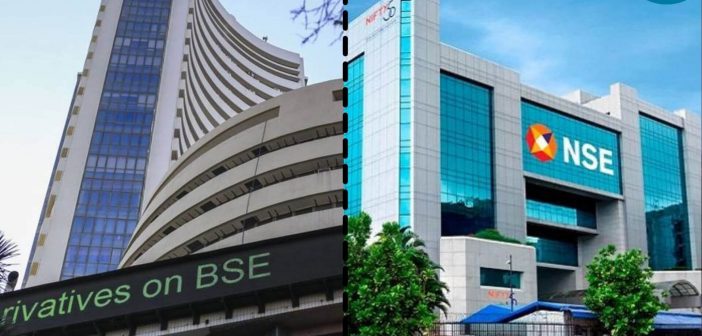This week, the Indian stock markets experienced notable volatility, with global economic factors and domestic developments influencing both the BSE Sensex and the NSE Nifty 50. Here’s a breakdown of how the markets fared:
BSE Sensex Performance:
The BSE Sensex experienced a turbulent week, closing lower on four out of five trading sessions. The index dropped by nearly 1,800 points over the course of the week. On September 30, the Sensex opened at 85,208 but saw consistent downward pressure, closing at 81,747 by October 4—a 4.2% decline overall. Notably, on October 3, it saw its biggest single-day drop of 2.1%, ending at 82,497 as concerns over global interest rates and oil prices deepened.
- Closing on October 4: 81,747.20 (-0.91%)
- Weekly High: 85,978.25 on September 27
- Weekly Low: 81,533.55 on October 4
NSE Nifty 50 Performance:
The Nifty 50 mirrored the BSE Sensex in terms of negative sentiment, also witnessing a sharp sell-off throughout the week. The index dropped below the psychological 25,000 mark, closing at 25,014.60 on October 4. Concerns over rising U.S. Treasury yields, continued geopolitical tensions, and domestic economic factors such as rising inflation affected market sentiment.
- Closing on October 4: 25,014.60 (-0.93%)
- Weekly High: 26,157 on September 27
- Weekly Low: 25,014 on October 4
Sector-wise Analysis:
- IT and Tech Stocks: These stocks took a heavy beating as concerns over global recessionary trends and continued tightening by central banks globally hurt growth outlooks. Infosys, TCS, and Wipro all witnessed sharp corrections, dragging the broader indices down.
- Banking and Financials: A mix of results from major players like HDFC Bank and ICICI Bank led to mixed movements within the banking sector. Although they did not see the worst declines, the overall negative sentiment in the market impacted this sector too.
- Energy and Oil: Rising crude oil prices amid geopolitical tensions in the Middle East further pressured energy stocks, with ONGC and Reliance seeing notable declines.
Key Drivers:
- Global Interest Rates and Bond Yields: The rise in U.S. bond yields and hawkish commentary from the U.S. Federal Reserve continued to weigh on investor sentiment.
- Rupee Weakness: The rupee’s fall against the U.S. dollar to record lows exacerbated concerns about inflation, especially in import-dependent sectors.
- Geopolitical Tensions: Ongoing conflicts, particularly in the Middle East, led to rising oil prices, creating inflationary pressure domestically, further dampening market sentiment.
Outlook:
The short-term outlook for the Indian stock markets remains cautious. With continued global uncertainty, particularly around inflation, interest rates, and crude oil prices, markets may see further downside risk in the coming weeks. However, any positive cues from global central banks or a resolution to the geopolitical tensions could provide some relief to the markets.
Investors are advised to remain vigilant and consider sector-specific opportunities, particularly in defensive sectors like FMCG and healthcare, which could outperform in times of uncertainty.





